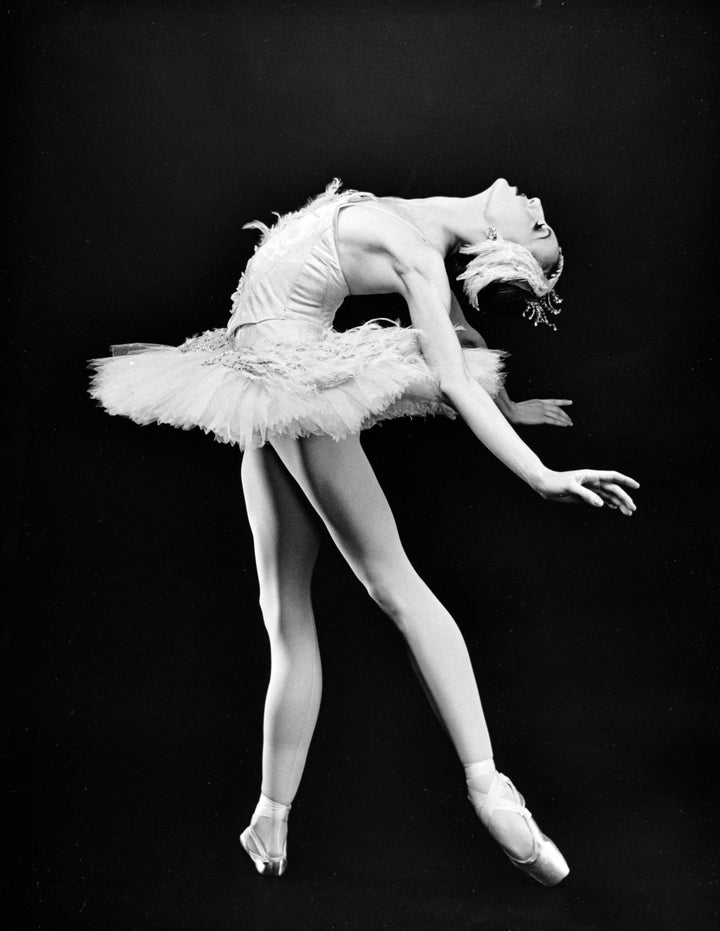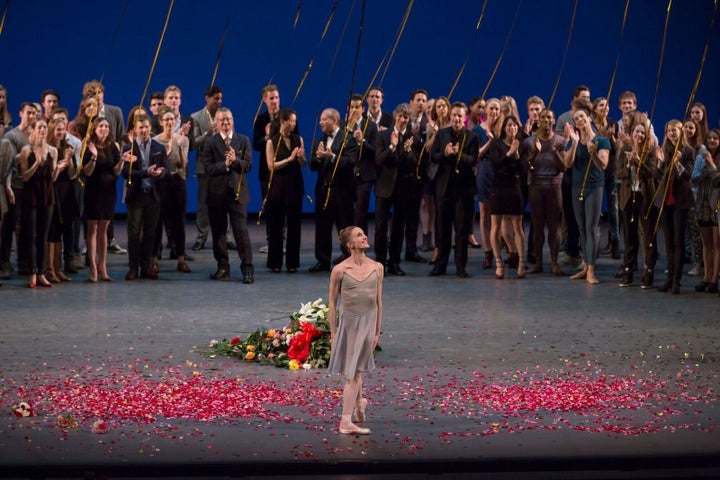
For a generation of ballerinas, Wendy Whelan was a walking goddess. The former New York City Ballet principal dancer joined the company at 17, and was quickly singled out for promotion and praise. She served as a muse for multiple then-up-and-coming choreographers and would go on to have more new ballets made for her than any other dancer in the company’s history. She became the defining American ballerina of her generation.
All the while, she says in a new documentary, she was asking herself, “What the fuck is it going to be like when I can’t do this any more?”
In 2013, she found out.
At the time, Whelan was 46 years old, which is all but ancient by ballerina standards. Ballet is so punishing on the body, and the standard demanded by top companies so high, that most women peak by their 30th birthdays and retire not long after. When Misty Copeland was promoted to the top rank of American Ballet Theater in 2015, it was a bittersweet moment: she’d been promoted at last, but at the age of 32, she probably didn’t have many dancing years left in her. Whelan, whose professional ballet career lasted three decades, was truly an anomaly, a ballet institution who outlasted some of her younger colleagues by years.
By 46, she noticed that she was being cast in fewer ballets, including, to her chagrin, the iconic Nutcracker, in which she’d been dancing the role of the Sugarplum Fairy for years. Her boss, Ballet Master Peter Martins, hinted that it might be time for her to move on. And then, her hip started hurting.
The documentary “Wendy Whelan: Restless Creature” finds Whelan preparing for surgery to repair a labral tear, which has made even walking across the stage an agony. She travels to Vail, Colorado, and puts herself in the hands of one of the world’s best hip surgeons, whose walls are covered in the jerseys of the pro athletes he’s treated. This is the man people see when they need to get back in the game, she explains. She needs to do just that, she says, especially since “I don’t have a ton of time left at my game.”

”Restless Creature” shows us Whelan’s recovery from the surgery (after first showing us the surgery itself, in rather gruesome detail), and her return to New York to contemplate what comes after ballet. She gets off crutches, returns to the ballet studio and begins to branch out into contemporary dance, hoping that it will be less brutal on her body. But it soon becomes clear that her body can’t take a return to ballet in addition to her ambitious plan to create a contemporary dance program and tour it all over the country. She has to focus on ballet for what little time she has left before retirement becomes inevitable.
Throughout the film, Whelan consults her former colleagues, all of whom have already retired. She asks them: How did you do this? How did you walk away from the only job you’ve ever had, the thing you’ve been working toward almost since you could walk? Who are you when you’re a ballerina who can’t do ballet any more?

Career paths out of ballet are notoriously narrow. Dancers usually skip college, and even the end of high school, to devote themselves to dancing in their late teens and early 20s, which means that when they retire from dancing, they’re out in the job market without an entry-level degree. Some dancers go on to teach or coach, and some to choreograph, though the latter path is often even less stable, predictable or lucrative than being a dancer. Some go into ballet-adjacent work, like dance photography. Some will be picked to run companies; Pacific Northwest Ballet, Miami City Ballet, Washington Ballet and Pennsylvania Ballet are all run by alumni of the New York City Ballet or American Ballet Theater. But there are only so many ballet companies to run, and turnover at the top can be infrequent.
Besides, as Whelan explains in the film, she hadn’t made a plan for her post-ballet life; while some of her colleagues were setting themselves up for the next step, she was busy just ... dancing.
At its core, “Restless Creature” is a film about grief. We watch as Whelan comes to the realization that her career is ending; that she’ll soon lose the structure of morning class and rehearsal and performance that have defined her days for decades; that she’ll leave behind a large piece of herself, and her identity, when she leaves the Lincoln Center stage for the last time. She moves through the stages of grieving, showing the camera very little anger, and the film ends with her farewell performance in October 2014, which featured yet more new works made just for her.

Now, she’s “really close to the end” of that grieving process, she told HuffPost in a phone interview. She didn’t go to the ballet for a while after she retired, but, she says, now she can go “and not feel pangs in the same way. I’m really happy about that. I can watch works that were made for me and feel a separation, and I’m really glad about that.”
She’s still performing. Her collaboration with the cadre of contemporary choreographers she assembled at the end of her time at City Ballet has toured around the country, and she opened the Joyce Theater’s spring season this year. She’s started coaching other dancers, and recently set a piece by Alexei Ratmansky with Pacific Northwest Ballet — meaning, she learned every step and movement of the ballet and then taught them all to the dancers at that company.
In her new life as a contemporary dancer, she says, her body and her mind have begun working differently. “I’ve let my body soften,” she says. “I’ve let it relax. There’s a lot of anxiety in the ballet world and nervousness,” but in contemporary dance, she feels more grounded. “There’s this calmness that I didn’t have in ballet because I was always up so high on my toes. For me there’s a parallel between how I was dancing and how I was feeling.” After decades of sewing ribbons onto pointe shoes every night, she now rehearses in socks, or bare feet, or canvas ballet flats.

Her new role allows her far more artistic control than she had as a ballerina. She chooses who choreographs on her, she designs programs, she wields far more power than she could as a dancer — something most ballerinas never get to experience before or after they retire. It took some getting used to. “I was so comfortable with my ballet power, my dancer power, that to have a voice, the comfort with having a voice, is slower to come to me,” she says. “I’ve always had a point of view, but to be in the front of the room, I didn’t move into a front of the room position until I retired, and that was really slow. “ While contemporary dance sees more women at the front of the room — running rehearsals instead of dancing in them — than classical ballet does, there’s still an enormous gender imbalance. Most dance companies are run by men, and most choreographers (even those with whom Whelan now collaborates) are men.
Above all, Whelan doesn’t plan to stop dancing, even if she’s not dancing ballet anymore. After she retired, she had a full hip replacement, which she says left her totally pain-free. She says that good genes and “great energy” in her family gave her a body that took easily to dance and was able to keep dancing long after most people have to stop, “a lucky body, not a great body.”
Still, she’s no longer on the regimented rehearsal schedule of a principal ballerina, and when asked what she most misses and least misses, she answers both questions the same way: “I really miss dancing all day long,” she says. “But something I really love is not dancing all day long. I love that I can’t rely on dancing all day long to stay creative.” After the heartbreak of leaving her old self behind, she’s found that she didn’t need it as much as she thought, or feared.
As for the beautiful and cruel ballet slippers that she put on her feet every day for almost 40 years, the bodily extensions that are synonymous with the ballerina, does she miss those? “Sometimes I miss being en pointe, but not a whole lot,” she says. “Every once and a while I would love to float for a minute on a shoe. But for the most part, I did it long enough that it’s OK.”

”Wendy Whelan: Restless Creature” is currently screening in New York City and opens in Los Angeles on June 9th. Find a screening near you.
